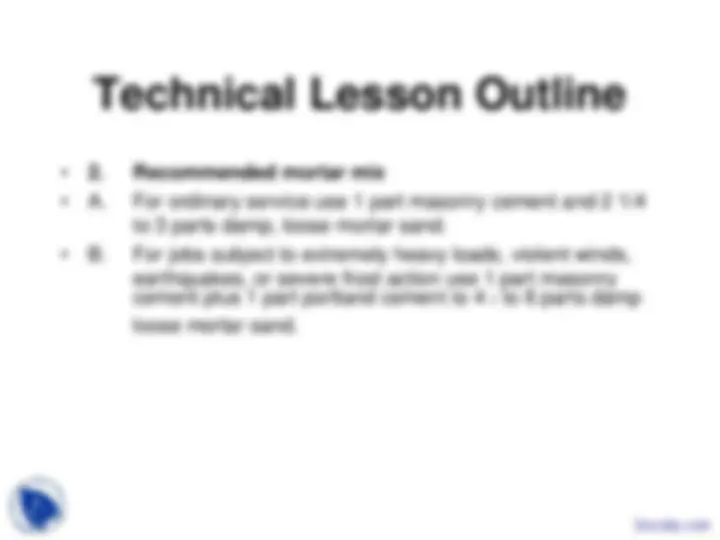





Study with the several resources on Docsity

Earn points by helping other students or get them with a premium plan


Prepare for your exams
Study with the several resources on Docsity

Earn points to download
Earn points by helping other students or get them with a premium plan
Community
Ask the community for help and clear up your study doubts
Discover the best universities in your country according to Docsity users
Free resources
Download our free guides on studying techniques, anxiety management strategies, and thesis advice from Docsity tutors
A technical lesson outline on the properties and preparation of mortar for masonry work. It covers the requirements of mortar, recommended mortar mixes, mixing procedures, and figuring the amount of materials needed for a job. The document emphasizes the importance of a chemically stable, strong, and durable mortar for building structures.
Typology: Slides
1 / 6

This page cannot be seen from the preview
Don't miss anything!




freezing and thawing.
for the life of the building with a minimum of maintenance.
of lime already added to the portland masonry cement.
when using masonry cement.